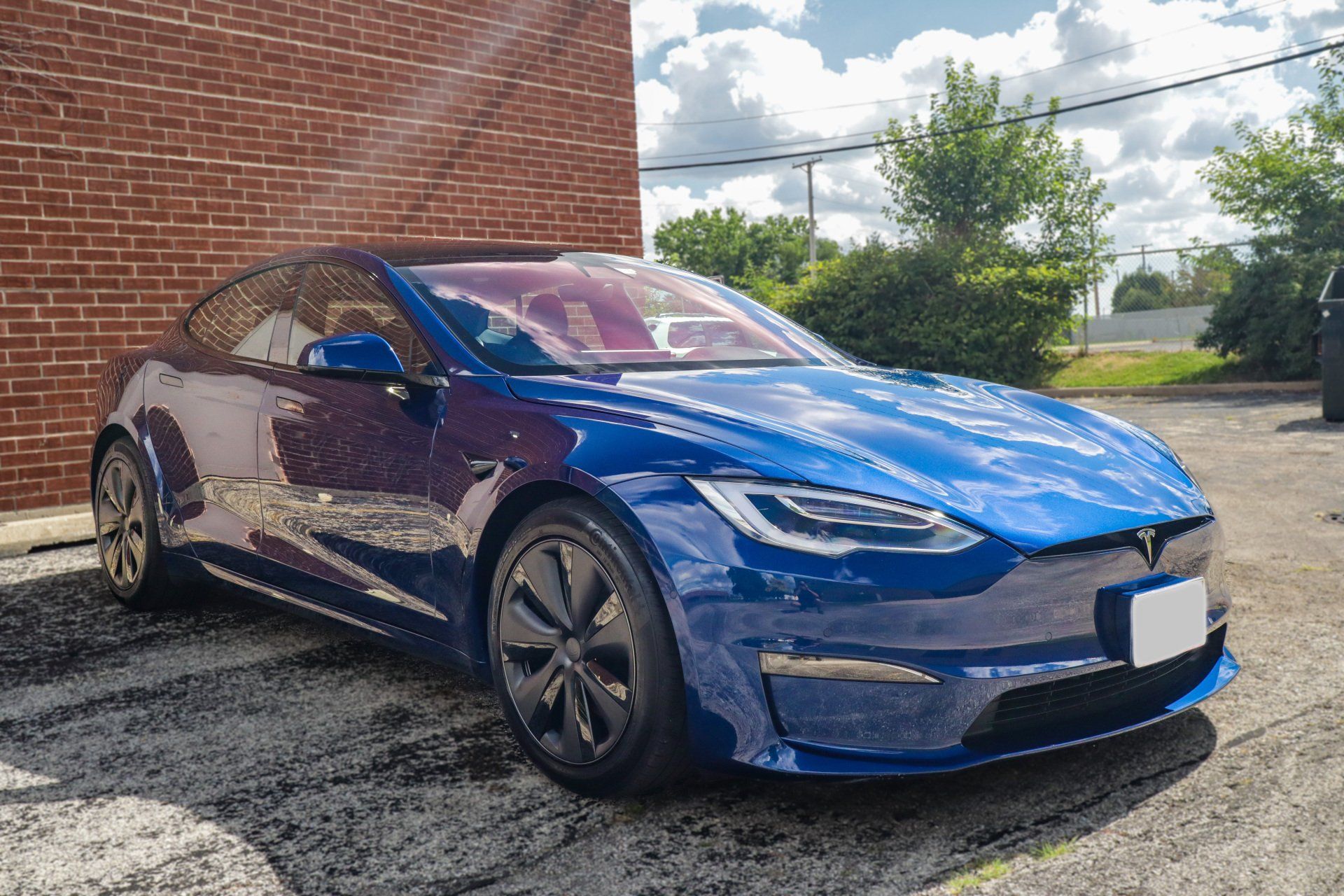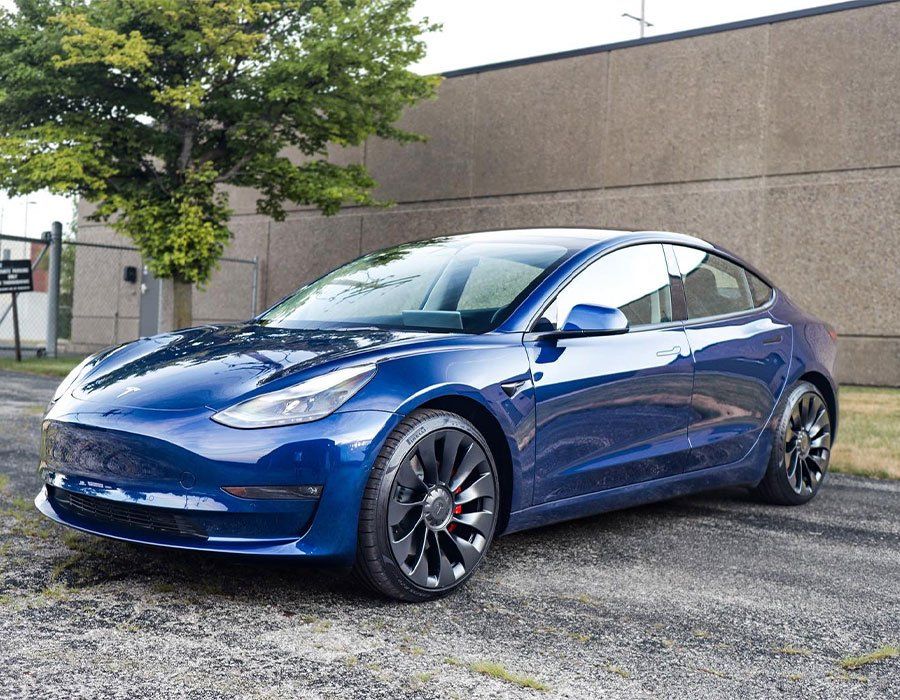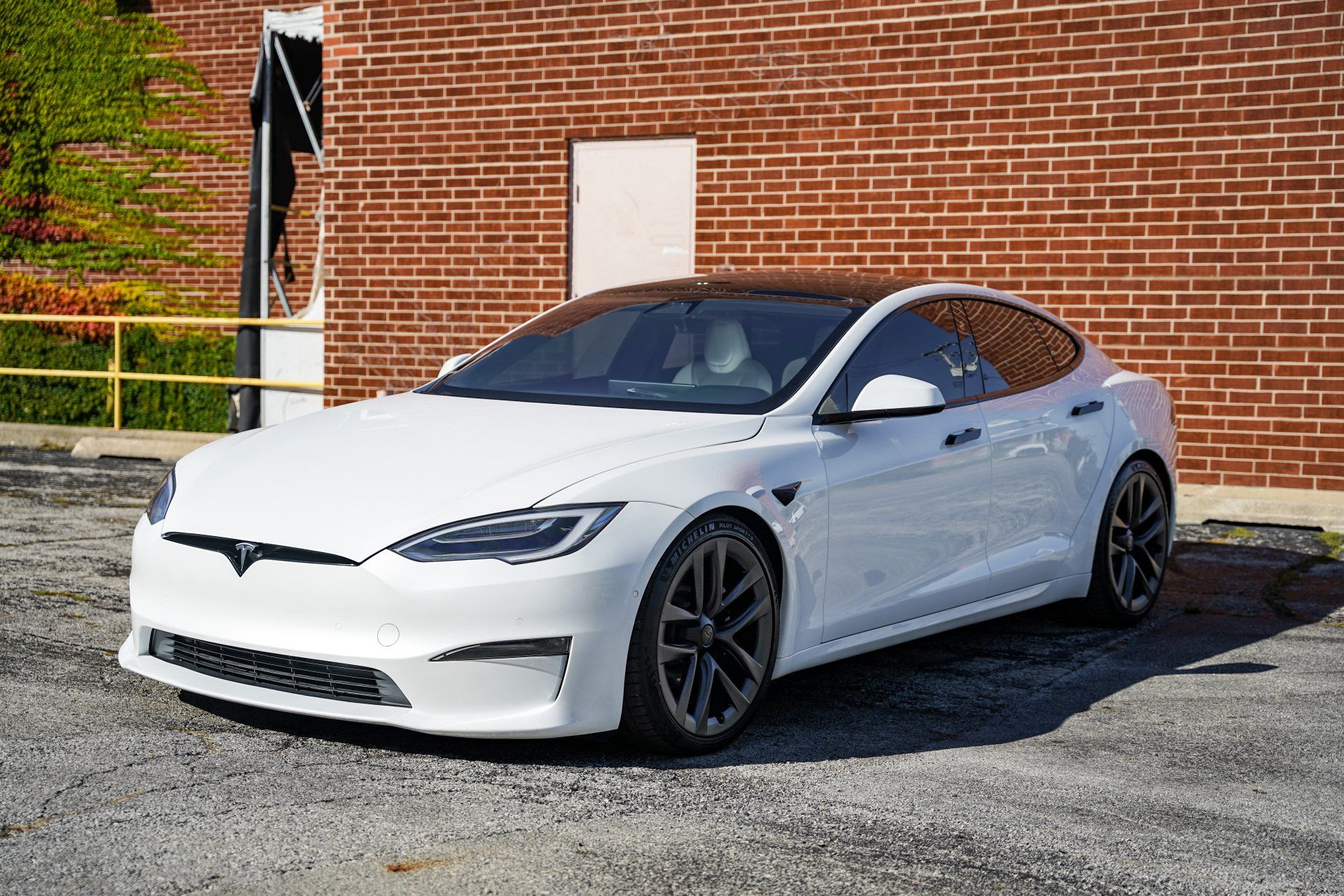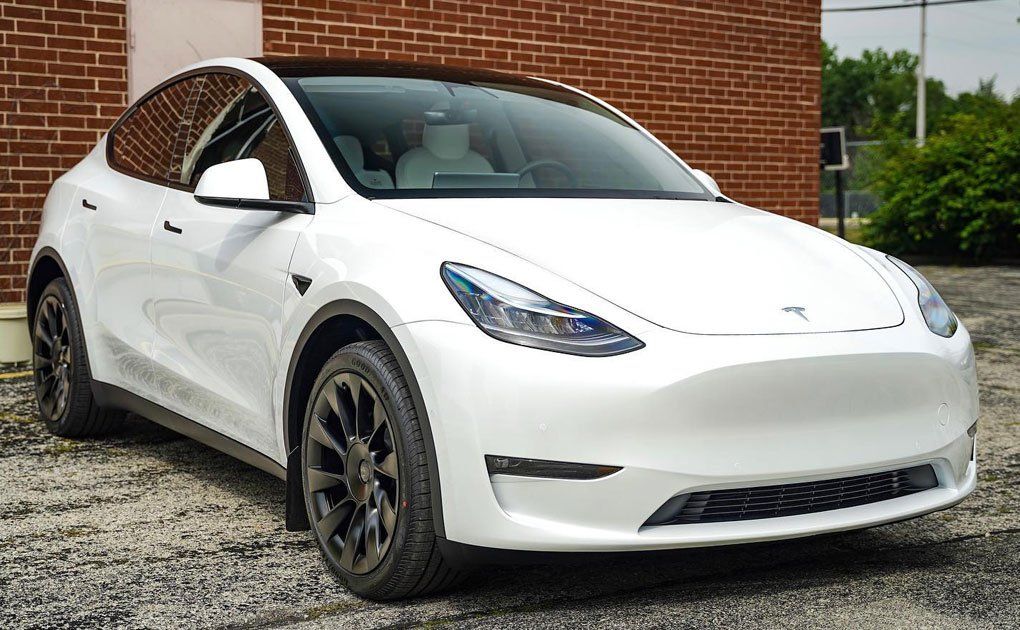Debunking Myths About Ceramic Coating for Teslas: Understanding Protection Benefits
CALL (708) 574-8496
GET A FREE ESTIMATEWhen it comes to protecting your Tesla’s paint, there are a lot of choices out there and plenty of opinions floating around. As a Tesla owner, you might have heard about ceramic coatings but find yourself wondering if they truly live up to the hype. Do they really provide the ultimate shield against scratches and grime, or are they just another over-sold upgrade? The truth is, while ceramic coatings can offer impressive benefits, they don't work miracles. They require some understanding and management to ensure you get the most bang for your buck. In this article, we’ll sort through the common myths surrounding ceramic coating for Teslas and help you grasp what these products can realistically do for your vehicle.
Common myths about ceramic coating for Teslas include the belief that it eliminates the need for maintenance. In reality, while ceramic coatings enhance resistance to light scratches and make cleaning easier, they do not protect against sharp objects and still require regular washing and care to maintain their effectiveness.
Common Myths About Ceramic Coating
One prevalent myth is that ceramic coating is a permanent scratch solution. It it not an armor against more significant damage. Many Tesla owners will tell you that, although these coatings may fend off minor blemishes from everyday use, they won’t prevent those annoying door dings from other cars in parking lots. Therefore, while it enhances aesthetic appeal and maintains your car’s overall look, you still need to be cautious about where you park.
Digging deeper into the discussion reveals another common misconception: that all vehicles benefit equally from ceramic coatings. The truth is vehicle-specific factors play a huge role. A Tesla frequently traversing city streets will reap far more rewards than one stashed away in a garage during weekdays. Cars exposed to the elements—like road salt in winter or other corrosive environments—benefit significantly as the coating helps protect the paintwork from harsh conditions. Understanding how often and under what circumstances you drive can help you appreciate how much your coating is doing for you.
One of the most disappointing myths out there is the belief that a ceramic coating completely eliminates the need for cleaning. While these coatings do an excellent job at repelling dirt and grime, they don’t allow for a carefree existence. Regular washing remains essential to maintaining your vehicle's appearance and the efficacy of the coating. For instance, pollen or bird droppings; even with ceramic protection, owners consistently find themselves rinsing off these pesky nuisances to keep their cars looking fresh. Skipping out on cleaning might result in unwanted buildup that can settle into your paint over time.
Moving on to performance characteristics, many people erroneously assume that ceramic coatings offer extreme heat resistance. These coatings are designed to protect against harmful UV rays and everyday heat exposure, but they aren't fireproof nor fully resistant to extreme temperatures. A common testament among users is experiencing diminished performance after prolonged exposure to intense sun or heat—especially in areas like Arizona where summers can scorch any surface. It’s important for vehicle owners to have realistic expectations regarding where their car can thrive.
Understanding these prevalent myths enables Tesla owners to grasp the real benefits of ceramic coatings while fostering informed decisions about maintenance and protection strategies. The next section will highlight specific advantages that enhance the protective capabilities of ceramic coatings designed for electric vehicles.
True Benefits for Tesla Vehicles
- Enhanced Protection: Ceramic coatings provide a strong layer of protection against environmental contaminants such as road tar, bird droppings, acid rain, and tree sap, making maintenance easier. This is particularly important for Tesla owners who want to keep the stunning paintwork pristine despite daily exposure to the elements. With a ceramic coating, you can practically hear your paint sigh in relief as those nasty pollutants glide right off, rather than sticking and potentially causing long-term damage.
- Hydrophobic Properties: One of the standout features is the hydrophobic layer that ceramic coatings create, causing water to bead off the surface like a new car on delivery day. This unique property not only contributes to an aesthetically pleasing look but also reduces the risk of unsightly water spots and streaks. Imagine enjoying that first wash after a rainstorm and noticing that your Tesla looks almost as if it were never outside at all—that's the magic of hydrophobic technology at work! It allows for longer intervals between washes, making your life much easier in terms of maintenance.
- UV Resistance: Another compelling advantage is the UV resistance that ceramic coatings offer, which is especially beneficial for preventing paint oxidation and fading over time. Consider this: A Tesla Model S parked outdoors in sunny climates like California would preserve its glossy look much longer with a ceramic coating compared to one without. The coating acts as a shield against harmful UV rays that can dull colors and degrade clear coats over time, preserving not just your vehicle's appearance but its overall value.
Given these tangible benefits, the next key decision lies in the method of application. Understanding how to properly apply ceramic coatings will significantly influence how effectively they protect your investment and enhance your experience with your vehicle. The nuances between different application strategies are crucial to consider.
Application Methods: Professional vs. DIY
When it comes to applying ceramic coatings to Teslas, owners often find themselves at a crossroads. On one side, you have professional services that promise expert results; on the other, there are DIY kits that offer an affordable alternative. Deciding which route to take can feel overwhelming, but understanding what each option entails can ease your decision-making process.
Professional Application
Opting for professional application means putting your vehicle in the hands of experienced detailers who have honed their craft over years. These professionals have access to high-end tools and specific techniques aimed at achieving even coverage, which is vital for long-lasting results. They know how to prepare the surface correctly by removing any contaminants and imperfections before the coating goes on, leading to better adhesion.
Many detailing experts emphasize that improper application—something more likely to happen in DIY attempts—can negate the benefits of even the best coatings. Moreover, hiring professionals often comes with an added layer of security: warranties. Many services backed by reputable detailers include warranties that can cover any mishaps or defects within a specified period. For example, if the coating starts wearing off earlier than expected, you may receive a retouch at no additional charge.
However, there are considerations one must keep in mind when choosing this route. While the quality of work is generally superior, professional coatings can come at a hefty price. Depending on your location and the detailer's reputation, costs can range from $500 to $2,000.
DIY Approach
On the flip side, pursuing the DIY approach means you can achieve professional-level protection without breaking the bank. Kits designed for consumer use fall in a range of about $50 to $150 and often contain everything you need: cleaning solutions, application pads, and detailed instructions tailored for novice users.
However, while this route is undeniably more cost-effective, it demands meticulous preparation and careful execution. As one user shared on a Tesla forum, committing an entire weekend to achieve satisfactory results is not uncommon when using a DIY kit. Just think about it: preparing the car meticulously entails washing it thoroughly, correcting any paint imperfections, and then slowly applying the coating with precision.
If you're someone who enjoys spending weekends engaging in detailed cleaning of your car under sunny skies—and perhaps with a favorite playlist blasting in the background—then this route could be immensely fulfilling. Ultimately, recognizing how ceramic coatings compare against other paint protection methods like traditional waxing or sealants is essential for making informed decisions. Each has its pros and cons; understanding them will aid in crafting a plan that suits both your vehicle's needs and your budgetary constraints.
With these insights in mind regarding application choices and potential outcomes, we can now explore how these options stack up against traditional alternatives to protect your vehicle's finish effectively.
Comparing Coating and Waxing Options
When it comes to keeping your Tesla looking pristine, choosing between waxing and ceramic coating is an important decision. Waxing is the classic route—something everyone is familiar with. It provides a layer of basic protection against contaminants like grime and dirt, but its effects are short-lived, typically lasting only a few months. You may find yourself buffing and applying wax frequently just to keep that gleam alive.
Think of waxing like putting on a fresh coat of paint on an old canvas; it might brighten things up initially, but it won't last long under the right (or wrong) conditions. On the flip side, ceramic coatings offer a more robust solution. With durability ranging from two to five years or even more, they're designed for those who prefer to spend less time cleaning and worrying about their car's finish. This glass-like coating forms a chemical bond with your vehicle’s paint, providing not just shine but also advanced protection against UV rays and other environmental hazards.
Pros and Cons Simplified
While waxing has its merits, one key advantage of ceramic coating is its low maintenance requirements. After initial application—typically performed by professionals—you'll find that routine upkeep is minimal compared to waxing. It helps repel water effectively, making it easier to wash off dirt when you do clean your Tesla. Imagine whipping out a garden hose and watching those droplets bead off effortlessly. That hydrophobic characteristic saves you time and effort in maintaining that showroom shine.
It's important to consider the financial aspect too. Ceramic coating tends to have a higher upfront price when compared to waxing—a trade-off for that extended lifespan and enhanced protection. Understanding whether this investment aligns with your situation can guide your decision. Choosing between waxing and ceramic coating boils down to personal preference and lifestyle. If you enjoy the regular hands-on process of caring for your vehicle without significant upfront investment, traditional waxing could still work well for you. However, if you'd prefer to safeguard your Tesla with less fuss while enjoying long-term benefits, ceramic coating could be worth considering.
With these considerations in mind, we can further examine how this protective layer holds up across various criteria, revealing both its strengths and weaknesses.
Pros and Cons of Ceramic Coating on Teslas
When it comes to enhancing your Tesla's protection, ceramic coating offers a world of advantages. One significant pro is its outstanding durability. Unlike traditional wax that may last just a few weeks, ceramic coatings can provide lasting protection for two to five years under optimal conditions. Imagine the peace of mind that comes with knowing your vehicle is shielded against the harsh effects of sun exposure, rain, and environmental grime.
Alongside durability, another key advantage is its ability to guard against environmental contaminants and UV rays. Whether it's bird droppings, tree sap, or even those pesky acid rains, a ceramic coating can act as a strong barrier. The hydrophobic properties of the coating make it nearly effortless to wash your car; water beads off and rolls away, taking dirt with it. This means less scrubbing and more time enjoying your pristine vehicle. Moreover, many Tesla owners find that the glossy finish provided by ceramic coating significantly enhances their car’s visual appeal. The shine appears deeper and richer than what you would get with regular waxing. It’s like giving your Tesla an upgrade not only in protection but in aesthetic allure—all without compromising its sleek design.
However, while the benefits are enticing, it’s also prudent to consider some downsides associated with ceramic coatings. One of these drawbacks is the cost. Professional application can range from $1,000 to $3,000, which might seem steep compared to traditional wax options that are cheaper upfront. Moreover, unlike DIY solutions where you might save money, applying ceramic coating requires skill and time—many people discover that failing to follow proper procedures can lead to unsatisfactory results.
Additionally, while ceramic coatings offer significant protection from environmental contaminants, they do not guard against deeper impacts or serious abrasions, such as rock chips or vandalism. Think of it this way: they provide a layer of defense, but heavy artillery is still too much for them to handle! Finally, even though reducing maintenance needs is a perk of ceramic coatings, some level of upkeep is necessary to maintain their effectiveness over time. Regularly washing your car with specific cleaning products designed for ceramic-coated surfaces is essential to keeping its hydrophobic properties intact; otherwise, you might find that it loses some effectiveness over time.
As we unpack these points—benefits alongside drawbacks—gaining clarity on the specifics helps in navigating the larger conversation around protective coatings available today. Many users find that specific environmental factors can influence how well these coatings perform. Things like exposure to roads laden with salt or extreme weather can put even the best ceramic coatings to the test.
When considering investing in ceramic coatings, remember that knowledge is power. Recognizing these common questions helps dispel myths and clarifies what you can expect as a Tesla owner eager to protect your investment effectively. Consequently, this comprehensive understanding should not only affirm your decision but also assist in getting the most out of this impressive technology for your vehicle’s maintenance routine. Ultimately, informed choices empower Tesla owners to protect their vehicles with confidence while maximizing the advantages that ceramic coatings provide.
Tesla Perfection Starts with Ceramic Coating
Protect your Tesla with the ultimate ceramic coating services offered by D’Andrea Auto Detailing in Carol Stream, IL. Our advanced ceramic coating solutions provide a durable shield against weather, road debris, and environmental contaminants while enhancing the glossy finish of your vehicle. With our expertise and attention to detail, your Tesla will benefit from unparalleled protection and a sleek appearance. Experience the peace of mind that comes with knowing your car is safeguarded by cutting-edge technology. Visit us today and give your Tesla the care it deserves!
D’Andrea Auto Detailing was founded in 2021, setting out to be part of the solution to the obstacle of achieving automotive protection and perfection in the often messy Midwest city of Carol Stream, Illinois. We provide two types of high-quality vehicle paint protection services - Undrdog Ceramic Coatings and XPEL Paint Protection Films - alongside individual interior rejuvenation and exterior decontamination services. We aim to help both top-tier sports cars and daily drivers always look their best and operate even better!
Quick Links
Hours of Operation
Monday-Friday: 8:00 AM - 5:00 PM
Saturday - Sunday: Closed
This website was designed by the team at
Detailers Roadmap, a platform developed for detailing operators across the globe.
All Rights Reserved | 8bitcreative, LLC | D’Andrea Auto Detailing





